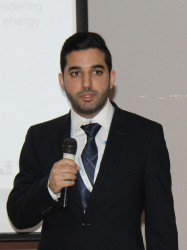BibTex format
@article{Davari:2022:10.3390/en15062144,
author = {Davari, MM and Ameli, H and Ameli, MT and Strbac, G},
doi = {10.3390/en15062144},
journal = {Energies},
title = {Impact of local emergency demand response programs on the operation of electricity and gas systems},
url = {http://dx.doi.org/10.3390/en15062144},
volume = {15},
year = {2022}
}

